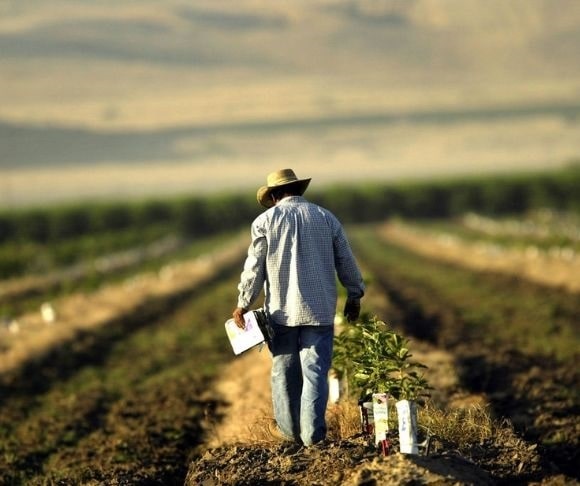US farmers are a hardscrabble group – they’ve weathered the Dust Bowl, cyclical economic downturns, farm credit decreases, and government rules and regulations. Family farmers took the brunt of the onslaught and have survived and succeeded despite the odds. But the threat we don’t see has the agriculture community on edge, raising alarm bells to cacophonic levels: the increase in farmland sales to China and other hostile nations. That constant clanging is paying off, but is the effort to stem the red tide too little too late?
The Heartland: A Slow Invasion
Outside entities have long been interested in the American climate and soil for growing crops and feeding livestock. No one blinked as Canada, our quirky neighbors to the north, invested – or even the Netherlands, Germany, Italy, and the United Kingdom. The rich earth is an attractive place to drop some cash if you have a small, populous country that likes to eat three squares a day.
But when Shuanghui International Holdings, a Chinese state-controlled conglomerate, sought to purchase Smithfield Foods in Virginia for approximately $7.1 billion, including its debt, hackles were raised by the agribusiness community. It was the most significant stock acquisition by a Chinese company of an American company. It set off that eerie feeling that perhaps it opened the gates for the Trojan Horse to roll through.
The Senate Committee on Agriculture, Nutrition, and Forestry pondered the reason behind the purchase, followed by a hearing in 2013, at which several officials expressed concern for economic and food security for Americans. The committee had several people testify about global business strategy.
The conclusion was that China was home to 21% of the world’s population, with only about 7% of productive farmland. Chinese people love pork. China can’t keep up with demand, and Smithfield can supply all the pork they can use. Daniel Slane, at the time a commissioner for the US-China Economic and Security Review Commission, saw the writing on the wall, testifying: “In my view, the purchase of Smithfield by China is the first of what I expect will be many forays into rural America.”
Slane was correct. From 2011 through 2021, China has gone from owning 69,000 acres to 384,000 acres of grazing land, crop fields, and livestock holdings.
States Take a Stand Against China

Jon Tester (Photo by Drew Angerer/Getty Images)
Whether the globalist administration will take steps to protect the nation’s food supply and the family farm from outside entities is unclear. But state legislators are attempting to stop foreign interests in their tracks in Wyoming, Montana, Florida, Texas, North Dakota, and across the plains and the prairies.
Wyoming state Rep. Bill Allemand (R) has been sharing his commonsense message with anyone who will listen: “We cannot buy land in China. We cannot buy industry in Russia. We cannot buy — I don’t even think we want to get off the plane in Iran. So, this is just limited to people who hate us,” Allemand said, Wyoming Tribune Eagle reports.
Congress has recently taken an interest in the threat posed by foreign ownership. US Sens. Jon Tester, a Montana Democrat, and Mike Rounds, a South Dakota Republican, proposed legislation preventing China, Iran, North Korea, and Russia from buying or leasing farmland. Tester, the only working farmer in Congress, told Associated Press: “The bottom line is we don’t want folks from China owning our farmland. It goes against food security, and it goes against national security.”
But will it be enough?
The Endangered Family Farm

(Photo by David McNew/Getty Images)
The Department of Agriculture monitors foreign investment in farmland under the 1978 Agricultural Foreign Investment Disclosure Act. But China and foreign insurgents in the American farm and ranching communities have other hurdles.
Back in 1985, small farmers were being bankrupted and foreclosed upon. That’s when the unlikely team of Willie Nelson and John Mellencamp felt compelled to step up: Both had grown up on family farms, and it was time to put popularity behind the bully pulpit and save the Heartland. They created Farm Aid. Farm Aid warns: “We’ve worked side-by-side with farmers to protest factory farms and inform farmers and eaters about issues like genetically modified food and growth hormones.”
Ah, factory farms are so last week’s problem. The latest threat is the Petrie dish. As Liberty Nation’s Andrew Moran describes:
“Cultivated meat is manufactured from cells extracted from an animal and processed to propagate in vessels. They are then given a blend of amino acids, sugars, and nutrients. Once this is complete, the meat is harvested and formed into a wide array of products with many ingredients. The objective is to diminish animal agriculture’s environmental impact and reduce animal slaughter by supplying the planet with lab-grown protein.”
If the US can Frankenstein food, why can’t China play around with that tech in its Wuhan lab? Who needs all the farmland in the US now?
Family farmers in the US, as Farm Aid states, whether 190,000 or 150 acres, deserve America’s attention and protection. There are threats all around – but the one our nation’s farms should not have to fight is the encroachment of foreign interests moving the little guy out. US farmers and ranchers feed this nation, first and foremost. But they also feed the world: The Department of Commerce reported that “exports of US farm and food products to the world totaled $177 billion.” The security of our nation and so many worldwide depend on the American farmer. Allowing interference in agribusiness will be the end of food security in this nation.




